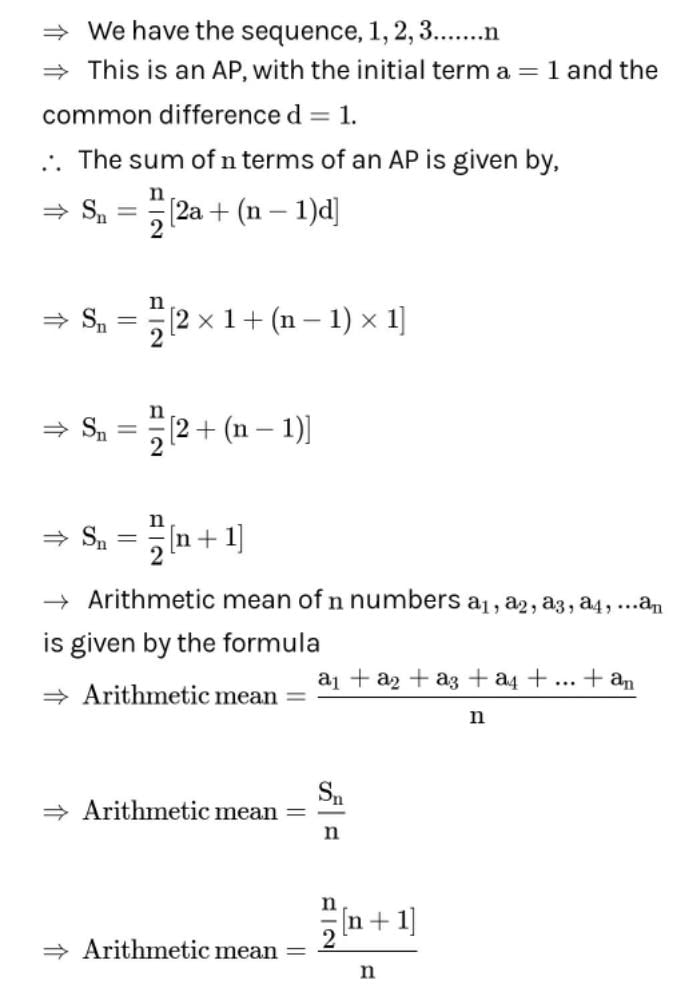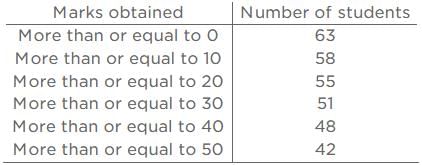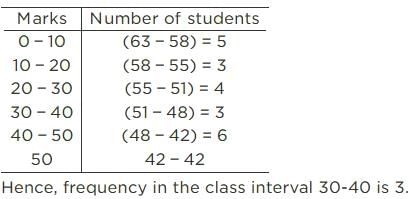All Exams >
Class 10 >
Weekly Tests for Class 10 Preparation >
All Questions
All questions of February Week 1 for Class 10 Exam
Liberalisation is..............- a)more trade
- b)removing barriers or restrictions set by the government
- c)checking barriers by the government
- d)help by the government
Correct answer is option 'B'. Can you explain this answer?
Liberalisation is..............
a)
more trade
b)
removing barriers or restrictions set by the government
c)
checking barriers by the government
d)
help by the government
|
|
your frnd... answered |
Liberalisation is the process or means of the elimination of the control of the state over economic activities. It provides greater autonomy to the business enterprises in decision-making and eliminates government interference.
Rapid Integration or interconnection between countries is known as:- a)Privatisation
- b)Globalisation
- c)Liberalisation
- d)Socialisation
Correct answer is option 'B'. Can you explain this answer?
Rapid Integration or interconnection between countries is known as:
a)
Privatisation
b)
Globalisation
c)
Liberalisation
d)
Socialisation
|
|
Shreya Seth answered |
Correct answer is option B that is Globalisation .
Because more and more goods and services , investments and technology are moving between countries.
there is one more way in which the countries can be connected . This is through the movement of people between countries. MNCs are playing major role in globalisation process .
Because more and more goods and services , investments and technology are moving between countries.
there is one more way in which the countries can be connected . This is through the movement of people between countries. MNCs are playing major role in globalisation process .
If mean = (3 median - mode). k, then the value of k is- a)1
- b)2
- c)1/2
- d)3/2
Correct answer is option 'C'. Can you explain this answer?
If mean = (3 median - mode). k, then the value of k is
a)
1
b)
2
c)
1/2
d)
3/2
|
|
Kiran Mehta answered |
∵ Mode = 3 median - 2 mean
⇒ 2 mean = 3 m edian - mode

⇒ 2 mean = 3 m edian - mode

Globalisation will result in- a)more competition among producers
- b)less competition among producers
- c)no change in competition among producers
- d)none of the above
Correct answer is option 'A'. Can you explain this answer?
Globalisation will result in
a)
more competition among producers
b)
less competition among producers
c)
no change in competition among producers
d)
none of the above
|
|
Amol srinivasan answered |
Explanation:
Globalisation refers to the integration of economies, societies and cultures of different countries. It has a profound impact on the competition among producers. The correct answer to the given question is option 'A' i.e. more competition among producers. Let's understand why:
Reasons:
1. Increased market size: Globalisation increases the market size for producers as they can now sell their products to customers all over the world. This leads to more competition among producers as they are all vying for the same customers.
2. Lower trade barriers: Globalisation leads to the reduction of trade barriers between countries. Producers can now import and export goods more easily, which increases competition among producers as they are now competing with producers from other countries.
3. Advancements in technology: Globalisation has led to advancements in technology, which has made it easier for producers to produce and sell goods. This has increased competition among producers as they are now able to produce goods more efficiently and at a lower cost.
4. Increased access to capital: Globalisation has led to an increase in access to capital for producers. This has enabled them to invest in research and development, which has led to the creation of new and innovative products. This has increased competition among producers as they are now competing with producers who have access to the latest technology.
Conclusion:
In conclusion, globalisation has resulted in more competition among producers. This competition has led to innovations in products, lower prices for consumers and increased efficiency in production. However, it has also led to job losses in some sectors and increased inequality.
Globalisation refers to the integration of economies, societies and cultures of different countries. It has a profound impact on the competition among producers. The correct answer to the given question is option 'A' i.e. more competition among producers. Let's understand why:
Reasons:
1. Increased market size: Globalisation increases the market size for producers as they can now sell their products to customers all over the world. This leads to more competition among producers as they are all vying for the same customers.
2. Lower trade barriers: Globalisation leads to the reduction of trade barriers between countries. Producers can now import and export goods more easily, which increases competition among producers as they are now competing with producers from other countries.
3. Advancements in technology: Globalisation has led to advancements in technology, which has made it easier for producers to produce and sell goods. This has increased competition among producers as they are now able to produce goods more efficiently and at a lower cost.
4. Increased access to capital: Globalisation has led to an increase in access to capital for producers. This has enabled them to invest in research and development, which has led to the creation of new and innovative products. This has increased competition among producers as they are now competing with producers who have access to the latest technology.
Conclusion:
In conclusion, globalisation has resulted in more competition among producers. This competition has led to innovations in products, lower prices for consumers and increased efficiency in production. However, it has also led to job losses in some sectors and increased inequality.
Assertion: Multinational companies help in the growth of local companies.
Reason: The activities of MNCs like research manufacturing, customer care services are spread over many countries.
- a)Both A and R are true and R is the correct explanation of A
- b)A is correct but R is wrong
- c)Both A and R are true but R is not the correct explanation of A
- d)A is wrong but R is correct
Correct answer is option 'C'. Can you explain this answer?
Assertion: Multinational companies help in the growth of local companies.
Reason: The activities of MNCs like research manufacturing, customer care services are spread over many countries.
Reason: The activities of MNCs like research manufacturing, customer care services are spread over many countries.
a)
Both A and R are true and R is the correct explanation of A
b)
A is correct but R is wrong
c)
Both A and R are true but R is not the correct explanation of A
d)
A is wrong but R is correct
|
|
Pooja Shah answered |
Multinational companies may help and invest in the local companies giving them another dimension to expand. However, possible reason cannot be the spread of services in many countries because it may just exploit the available labor force.
Removing barriers or restrictions set by the government is called:- a)Liberalisation
- b)Investment
- c)Fovonrable trade
- d)Free trade
Correct answer is option 'A'. Can you explain this answer?
Removing barriers or restrictions set by the government is called:
a)
Liberalisation
b)
Investment
c)
Fovonrable trade
d)
Free trade
|
|
Meera Rana answered |
The removing barriers or restrictions set by the government is called liberalization.
Assertion: Indian market is not expanding because of RBI.
Reason: The policy of globalisation and liberalisation has removed trade barriers.- a)Both A and R are true and R is the correct explanation of A
- b)Both A and R are true but R is not the correct explanation of A
- c)A is correct but R is wrong
- d)A is wrong but R is correct
Correct answer is option 'D'. Can you explain this answer?
Assertion: Indian market is not expanding because of RBI.
Reason: The policy of globalisation and liberalisation has removed trade barriers.
Reason: The policy of globalisation and liberalisation has removed trade barriers.
a)
Both A and R are true and R is the correct explanation of A
b)
Both A and R are true but R is not the correct explanation of A
c)
A is correct but R is wrong
d)
A is wrong but R is correct

|
Shreya Kasaudhan answered |
The class mark of the class 15.5 - 20.5
- a)15.5
- b)20.5
- c)18
- d)5
Correct answer is option 'C'. Can you explain this answer?
The class mark of the class 15.5 - 20.5
a)
15.5
b)
20.5
c)
18
d)
5

|
Crafty Classes answered |
class mark= (upper limit+lower limit)/2
= (15.5+20.5)/2
=36/2
=18
= (15.5+20.5)/2
=36/2
=18
Assertion: World Trade Organisation forms rules and regulations for all the member nations.
Reason: World Trade Organisation handles trade disputes.- a)Both A and R are true and R is the correct explanation of A
- b)Both A and R are true but R is not the correct explanation of A
- c)A is correct but R is wrong
- d)A is wrong but R is correct
Correct answer is option 'A'. Can you explain this answer?
Assertion: World Trade Organisation forms rules and regulations for all the member nations.
Reason: World Trade Organisation handles trade disputes.
Reason: World Trade Organisation handles trade disputes.
a)
Both A and R are true and R is the correct explanation of A
b)
Both A and R are true but R is not the correct explanation of A
c)
A is correct but R is wrong
d)
A is wrong but R is correct
|
|
Dino James answered |
Answer a
Mode and mean of a data are 12k and 15k. Median of the data is- a)12k
- b)14k
- c)15k
- d)16k
Correct answer is option 'B'. Can you explain this answer?
Mode and mean of a data are 12k and 15k. Median of the data is
a)
12k
b)
14k
c)
15k
d)
16k
|
|
Amit Kumar answered |
Here's the solution to your question:
If two values are given in the below formula than we can use the formula if one is given than we cannot use the formula
3median = 2mean+mode
3median = 2(15k)+12k
3median = 30k+12k
3median = 42k
median = 42k/3
median = 14k
You can understand all the concepts of Class 10 mathematics through the link:
The class marks of the class 18-22 is- a)4
- b)18
- c)22
- d)20
Correct answer is option 'D'. Can you explain this answer?
The class marks of the class 18-22 is
a)
4
b)
18
c)
22
d)
20
|
|
Harshit Agrawal answered |
We know that ,
Class Mark = upper limit + lower limit /2
--->. Class Mark = 22 + 18/2
--->. Class Mark = 40/2
--->. Class Mark = 20
Hence , option D is correct.
Class Mark = upper limit + lower limit /2
--->. Class Mark = 22 + 18/2
--->. Class Mark = 40/2
--->. Class Mark = 20
Hence , option D is correct.
The graphical representation of a cumulative frequency distribution is called- a)Bar graph
- b)Histogram
- c)Frequency polygon
- d)Ogive
Correct answer is option 'D'. Can you explain this answer?
The graphical representation of a cumulative frequency distribution is called
a)
Bar graph
b)
Histogram
c)
Frequency polygon
d)
Ogive
|
|
Anjana Khatri answered |
The graphical representation of a cumulative frequency distribution is called an ogive.
An ogive is a graph that plots the cumulative frequency of a set of data on the y-axis and the data values on the x-axis. It is used to represent the distribution of continuous data and is shaped like a curve.
A frequency polygon is also a graph that represents the frequency distribution of a set of data, but it is shaped like a polygon with straight lines connecting the data points. A bar graph is a graph that uses bars to represent the frequencies or counts of a set of data, and a histogram is a graph that represents the frequency distribution of continuous data using bars.
Globalisation has led to an improvement in living conditions:- a)of all the people
- b)of workers in the developing countries
- c)of people in developed countries
- d)none of the above.
Correct answer is option 'D'. Can you explain this answer?
Globalisation has led to an improvement in living conditions:
a)
of all the people
b)
of workers in the developing countries
c)
of people in developed countries
d)
none of the above.

|
Kds Coaching answered |
- Globalisation is the integration of economies, industries, markets, cultures and policy-making around the world.
- Globalisation describes a process by which national and regional economies, societies, and cultures have become integrated through the global network of trade, communication, immigration and transportation.
- Globalisation's impact is not uniform either for the people of developed or developing countries.
Therefore, Correct Answer - Option D
Assertion: Indian government encouraged foreign trade and investment for development.
Reason: Rate of economic growth of India was low.- a)Both A and R are true and R is the correct explanations of A
- b)Both A and R are true but R is not the correct explanations of A
- c)A is correct but R is wrong
- d)A is wrong but R is correct
Correct answer is option 'A'. Can you explain this answer?
Assertion: Indian government encouraged foreign trade and investment for development.
Reason: Rate of economic growth of India was low.
Reason: Rate of economic growth of India was low.
a)
Both A and R are true and R is the correct explanations of A
b)
Both A and R are true but R is not the correct explanations of A
c)
A is correct but R is wrong
d)
A is wrong but R is correct

|
EduRev Class 10 answered |
Assertion: Indian government encouraged foreign trade and investment for development.
Reason: Rate of economic growth of India is low.
Reason: Rate of economic growth of India is low.
A: Both A and R are true and R is the correct explanation of A.
- The statement in the assertion is true - The Indian government has indeed encouraged foreign trade and investment for development.
- The statement in the reason is also true - The rate of economic growth in India has been relatively low.
- The reason given in the statement correctly explains why the Indian government has encouraged foreign trade and investment.
- Foreign trade and investment can help boost economic growth by attracting capital, technology, and creating employment opportunities.
- Therefore, option A is the correct answer as both the assertion and the reason are true, and the reason explains the assertion.
B: Both A and R are true but R is not the correct explanation of A.
- The statement in the assertion is true - The Indian government has indeed encouraged foreign trade and investment for development.
- The statement in the reason is also true - The rate of economic growth in India has been relatively low.
- However, the reason given in the statement is the correct explanation of why the Indian government has encouraged foreign trade and investment.
- Therefore, option B is incorrect as the reason is the correct explanation of the assertion.
C: A is correct but R is wrong.
- The statement in the assertion is true - The Indian government has indeed encouraged foreign trade and investment for development.
- However, the statement in the reason is also true - The rate of economic growth in India has been relatively low.
- Therefore, option C is incorrect as both the assertion and the reason are true.
D: A is wrong but R is correct.
- The statement in the assertion is true - The Indian government has indeed encouraged foreign trade and investment for development.
- The statement in the reason is also true - The rate of economic growth in India has been relatively low.
- Therefore, option D is incorrect as both the assertion and the reason are true.
Therefore, the correct answer is A: Both A and R are true and R is the correct explanation of A.
The abscissa of the point of intersection of both types (less than & more than) of cumulative frequency curves help in finding- a)mean
- b)median
- c)mode
- d)None of these
Correct answer is option 'B'. Can you explain this answer?
The abscissa of the point of intersection of both types (less than & more than) of cumulative frequency curves help in finding
a)
mean
b)
median
c)
mode
d)
None of these
|
|
Aman kamat answered |
The abscissa of the point of intersection of both types of cumulative frequency curves helps in finding the median.
The median is the middle value in a dataset, and it divides the dataset into two equal parts. When we plot the cumulative frequency curve, we can find the median by finding the point of intersection of the two types of curves.
The point of intersection of the less than and more than cumulative frequency curves represents the median value. This is because at this point, half of the observations are below this value, and half of the observations are above this value.
The abscissa of the point of intersection does not help in finding the mean or mode. The mean is calculated by summing up all the observations and dividing by the number of observations. The mode is the value that appears most frequently in a dataset.
Therefore, the correct answer is (b) median.
The median is the middle value in a dataset, and it divides the dataset into two equal parts. When we plot the cumulative frequency curve, we can find the median by finding the point of intersection of the two types of curves.
The point of intersection of the less than and more than cumulative frequency curves represents the median value. This is because at this point, half of the observations are below this value, and half of the observations are above this value.
The abscissa of the point of intersection does not help in finding the mean or mode. The mean is calculated by summing up all the observations and dividing by the number of observations. The mode is the value that appears most frequently in a dataset.
Therefore, the correct answer is (b) median.
In the formula for finding the mean of a grouped frequency distribution, ui =
- a)

- b)h(xi - a)
- c)

- d)

Correct answer is option 'C'. Can you explain this answer?
In the formula for finding the mean of a grouped frequency distribution, ui =
a)

b)
h(xi - a)
c)

d)


|
Kamna Science Academy answered |


 this is step deviation formula used for finding mean
this is step deviation formula used for finding meanWhat is the main aim of the World Trade Organisation (WTO)?- a)To control domestic trade
- b)To ban foreign investments
- c)To liberalise international trade
- d)To increase import taxes
Correct answer is option 'C'. Can you explain this answer?
What is the main aim of the World Trade Organisation (WTO)?
a)
To control domestic trade
b)
To ban foreign investments
c)
To liberalise international trade
d)
To increase import taxes

|
EduRev Class 10 answered |
The World Trade Organisation (WTO) is an international body that was established to promote free and fair trade across countries. Its main objective is to remove trade barriers and ensure smooth flow of goods and services between nations.
It does not aim to ban investments or increase taxes, but rather to make global trade easier and more open.
It does not aim to ban investments or increase taxes, but rather to make global trade easier and more open.
The runs scored by a batsman in 35 different matches are given below:

The number of matches in which the batsman scored less than 60 runs are- a)16
- b)24
- c)8
- d)19
Correct answer is option 'B'. Can you explain this answer?
The runs scored by a batsman in 35 different matches are given below:

The number of matches in which the batsman scored less than 60 runs are

The number of matches in which the batsman scored less than 60 runs are
a)
16
b)
24
c)
8
d)
19

|
Kds Coaching answered |
We need to find the number of matches in which the batsman scored less than 60 runs.
Step 1: Identify the relevant class intervals
The batsman scored less than 60 runs in the following class intervals:
- 0–15 (Frequency = 5)
- 15–30 (Frequency = 7)
- 30–45 (Frequency = 4)
- 45–60 (Frequency = 8)
Step 2: Sum the frequencies
Total number of matches where runs scored < 60:
= 5 + 7 + 4 + 8
= 24 matches
= 5 + 7 + 4 + 8
= 24 matches
Final Answer:
The number of matches in which the batsman scored less than 60 runs is 24.
Chapter doubts & questions for February Week 1 - Weekly Tests for Class 10 Preparation 2025 is part of Class 10 exam preparation. The chapters have been prepared according to the Class 10 exam syllabus. The Chapter doubts & questions, notes, tests & MCQs are made for Class 10 2025 Exam. Find important definitions, questions, notes, meanings, examples, exercises, MCQs and online tests here.
Chapter doubts & questions of February Week 1 - Weekly Tests for Class 10 Preparation in English & Hindi are available as part of Class 10 exam.
Download more important topics, notes, lectures and mock test series for Class 10 Exam by signing up for free.

Contact Support
Our team is online on weekdays between 10 AM - 7 PM
Typical reply within 3 hours
|
Free Exam Preparation
at your Fingertips!
Access Free Study Material - Test Series, Structured Courses, Free Videos & Study Notes and Prepare for Your Exam With Ease

 Join the 10M+ students on EduRev
Join the 10M+ students on EduRev
|

|
Create your account for free
OR
Forgot Password
OR
Signup on EduRev and stay on top of your study goals
10M+ students crushing their study goals daily




















